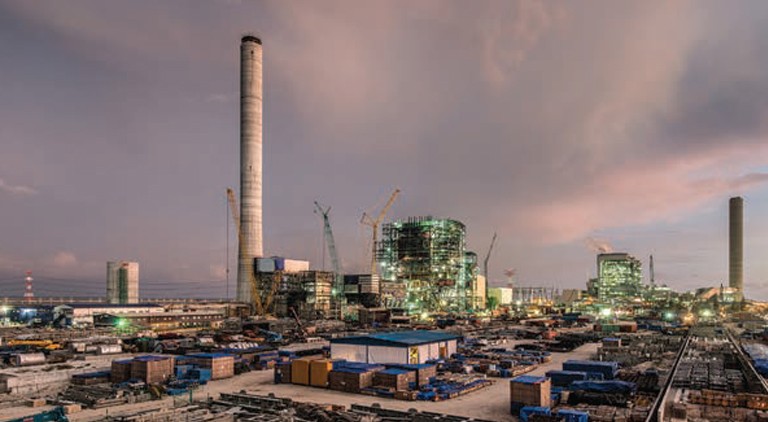Ensuring successful coal plant zero-liquid discharge projects
By EPR Magazine Editorial March 8, 2019 12:01 pm IST
By EPR Magazine Editorial March 8, 2019 12:01 pm IST

Few sectors highlight the challenges posed by the energy/water nexus so clearly as coal power in India.
Coal will remain central to India’s base load generation for the foreseeable future. About 60 per cent of India’s installed power capacity is coal-based. This is set to increase to 70 per cent in 2026, according to BMI Research.
India’s thermal power industry’s annual water requirement, estimated at 22 billion cubic meters, is equal to over half of India’s total domestic water needs. According to Centre for Science and the Environment report, at an average of 4 cubic meters per megawatt-hour (m3/MWh), Indian coal-fired plants with cooling towers consume twice as much water as their global counterparts.
This is at a time when India’s water resources are under pressure. Urbanisation, changing rainfall patterns and increased affluence – water use rises with wealth – are all affecting the balance between supply and demand.
It is estimated that India has seen a 60 per cent decline in per capita availability of water in the last 50 years; while Ernst & Young predicts industry’s demand for water will grow from 40.86 billion cubic metres (Bm3) in 2010 to 91.63 Bm3 in 2030. Recent media reports suggest an investment of $291 billion is needed to ensure supplies.
Coal power stations with air-cooled condensers have greatly reduced water consumption. Air-cooled condensers on the 4,800 MW Kusile power plant, South Africa, will save approximately 3,27,000 cubic meters per day of water when operating at full load. But, air cooling reduces generation efficiency.
The government is also looking at water reuse to reduce the burden coal plants place upon stressed water resources. In 2015 it was mandated for power plants to buy treated wastewater from sewage treatment plants, where the two plants are within a 50-kilometre radius of each other.
In the same year the government issued new water consumption limits for coal plants:
Requiring all new plants after 2017 to achieve ZLD is a significant requirement. Considerable thought and planning will be required to prepare the water management plan and select the most economical approach to achieve ZLD for specific plants.
Achieving ZLD in flue gas desulphurisation (FGD) applications can be extremely complex. As well as technical challenges ZLD projects have high capital costs, expand the footprint of the power plant, and engender high operations and maintenance (O&M) costs – with coal plant operators required to manage advanced water treatment equipment.
As a result national and regional gencos, and independent power producers (IPPs), are making slow progress in meeting the ZLD challenge. To help overcome the capital cost hurdle IPPs are looking to government for some form of compensation, or increased tariffs. For NTPC scale means the capital cost is less of a problem, but the high O&M cost of ZLD equipment has lead the public sector genco to seek a government incentive for it to become an ZLD early adopter, and pursue a Supreme Court ruling on the possibility of Merit Order Dispatch changes that reflect the cost of implementing ZLD.
From a technical stance, the first step to implementing a ZLD process is typically to establish the water reuse philosophy and the quantity of wastewater to be disposed of by developing a detailed water mass balance. Alternative treatment plans and processes are then identified and evaluated based upon the anticipated character of the wastewater.
Typically, wastewater volume reduction is the first step in the process. Alternatives for volume reduction may include enhanced raw water pre-treatment to minimise wastewater production, thermal treatment processes such as brine concentrators, advanced membrane processes such as high-efficiency reverse osmosis (RO) or optimised pre-treatment and unique separation (OPUS), or conventional RO for pre-concentrating the wastewater.
Final disposal of the concentrated wastewater from the volume reduction process may be solar evaporation – if site conditions are suitable, thermal evaporation by brine concentrators and/or crystallisers, and dewatering of solids being disposed to land. Occasionally, final disposal options such as deep well injection, ocean discharge or spray dryers may be feasible.
Process trains successfully implemented on power plant ZLD projects outside India include:
As well as bringing coal plants into line with government requirements, ZLD systems will help give operators better control over their water supply and consumption; a benefit which should not be underestimated as competition for India’s finite water resources grow.
In addition ZLD systems can recover resources with resale value – creating a potential revenue stream or way to offset capital or O&M costs.
Valuable feedwater components – salts, nutrients, critical metals and elements for example – can precipitate or be significantly enriched when the feedwater is concentrated. For example, a proprietary technology has been used for sequential salt recovery while achieving ZLD.
This technology involves multiple mineral precipitation and crystallisation steps, producing salts such as gypsum-magnesium hydroxide, magnesium hydroxide, and precipitated calcium carbonate. It is also possible to recover nutrients; while gypsum can be recovered from flue gas desalinisation wastewater.
The choice of equipment manufacturer is just one element in the complex process of achieving a successful coal plant ZLD project. There are a number of steps operators should consider as they investigate not just how to comply with new regulations, but also achieve optimal whole-life costs, and even the offset cost of ZLD through resource recovery.
Authored article by:
Brahmendra Thakur,
Director – Power Generation Services,
Black & Veatch India
Rajesh Patwardhan,
Director, Water Business Development,
Black & Veatch India
We use cookies to personalize your experience. By continuing to visit this website you agree to our Terms & Conditions, Privacy Policy and Cookie Policy.